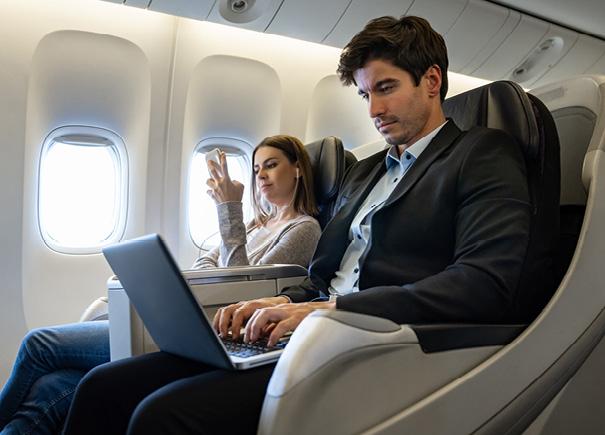After many industries were forced to stop travelling during the pandemic due to border closures and lockdowns, it appears that businesses are attempting to make up for lost time.
Business trips are now more than double the length they were in 2019.
Corporate Traveller recently analysed its travel booking data from January to May 2022. Data was compared to the booking data from January to May 2019.
So far this year …
- The average domestic business trip has been 3.09 days long, compared with just 1.1 day in 2019
- Trans-Tasman trips have averaged 2.6 days this year, compared with 1.3 in 2019
- The length of international trips overall has been averaging 8.7 days this year, compared with 3.4 days in 2019.
Corporate Traveller’s Global Managing Director, Tom Walley, has seen a significant demand for domestic and international travel from Corporate Traveller customers this year.
“Our data suggests businesses are more eager than ever to take to the skies and will continue organising more lengthy trips to multiple destinations, with the aim to rebuild, increase sales, facilitate acquisitions and partnerships, expand into new markets and recruit and retain talent.”
Below are the top three reasons SMEs are extending their business trips this year.
-
Reigniting face-to-face communication. After two years of virtual meetings, face-to-face meetings are likely to increase in frequency. More businesses may be prioritising meeting with interstate and international stakeholders to nurture and grow relationships, or to conduct longer sales and recruitment-based trips. Executives may also be reuniting with teams for the first time since 2019 and engaging in lengthy operational and strategy meetings in person.
- Travel industry bounceback. Passenger numbers are bouncing back strongly this year, with Australia’s domestic travel industry headed for a full recovery. In April 2022, Gold Coast routes, in particular, saw significant numbers: the Canberra-Gold Coast route saw a 193 per cent increase on pre-pandemic levels and flights between the Gold Coast, Melbourne, Adelaide, and Sydney also eclipsed pre-pandemic numbers.[1]
- Airport and flight delays. Some airports and airlines are facing challenges due to workforce shortages. Some businesses have experienced, or may be anticipating, delays and cancellations, and may be choosing to extend trips to make up for any lost time. Delays have occurred during high volume periods, such as the school holidays, whereby Sydney airport alone expected more than two million travellers in July.[2]
Tom adds, “Businesses will likely continue increasing the length of their trips to account for potential delays and other disruptions. International flight capacity has been slower to return than domestic and I expect business trips will increase by around one to two days further over the next year.”
[1] ACCC, 8 June 2022, accc.gov.au/system/files/Airline%20competition%20in%20Australia%20report%20%28June%202022%29.pdf
[2] Sydney Airport, 2022 sydneyairport.com.au/travelinfo


